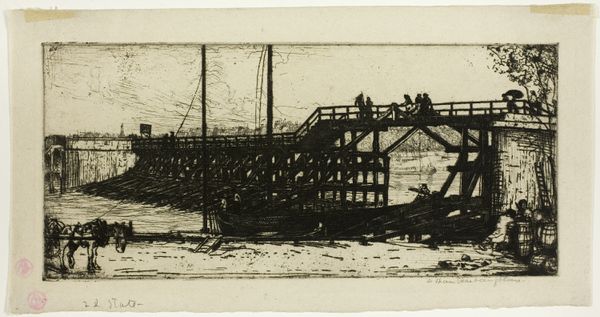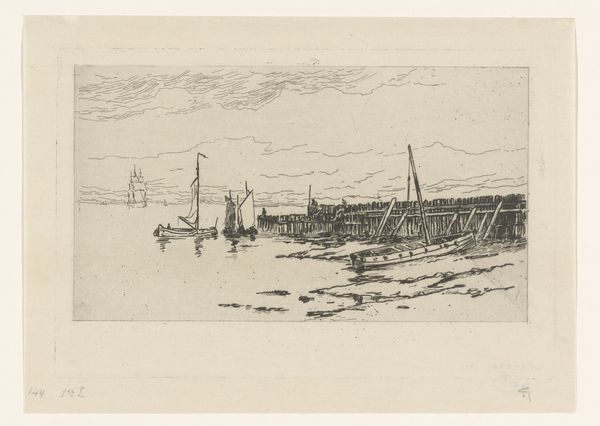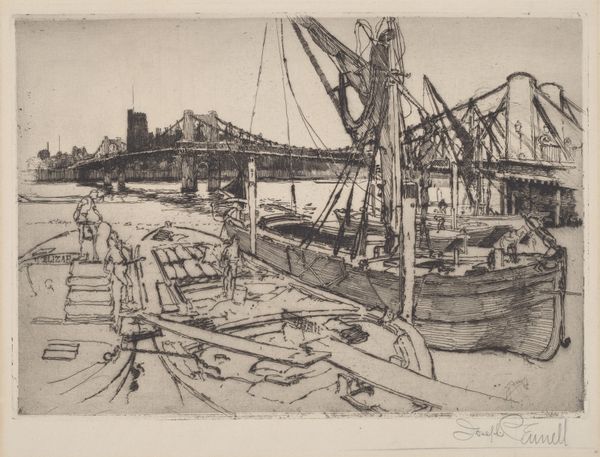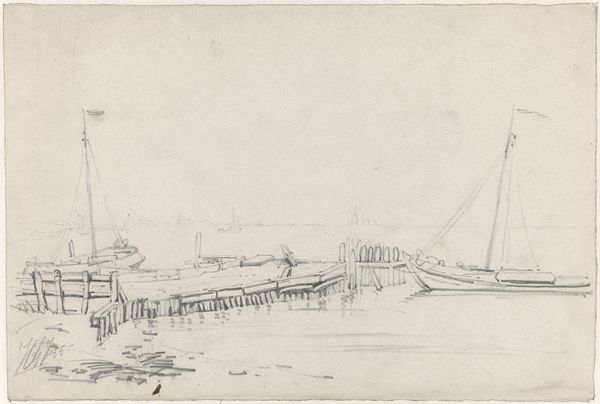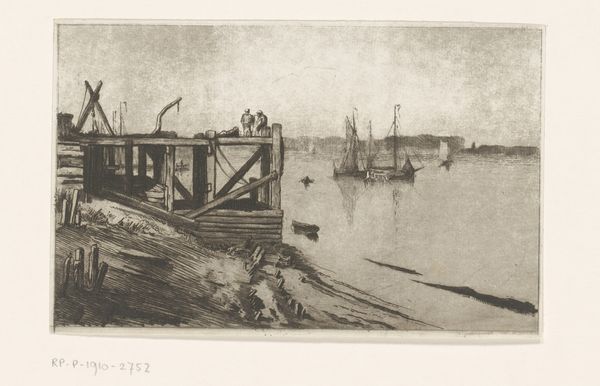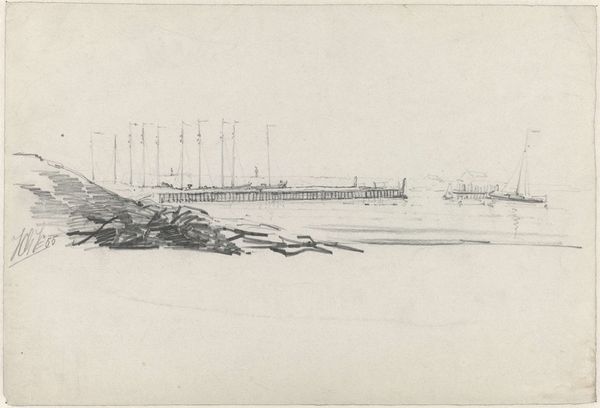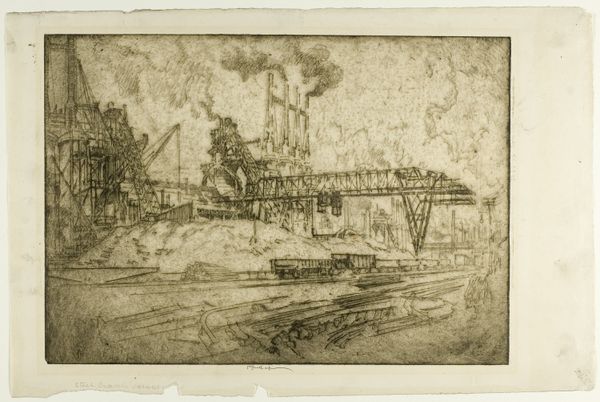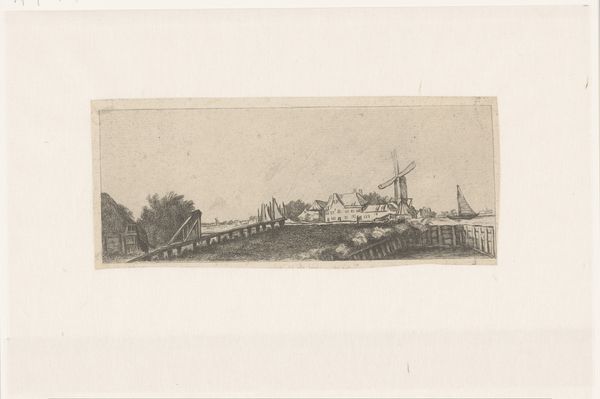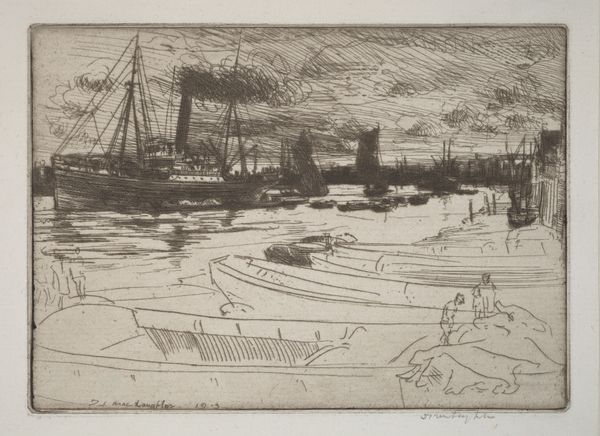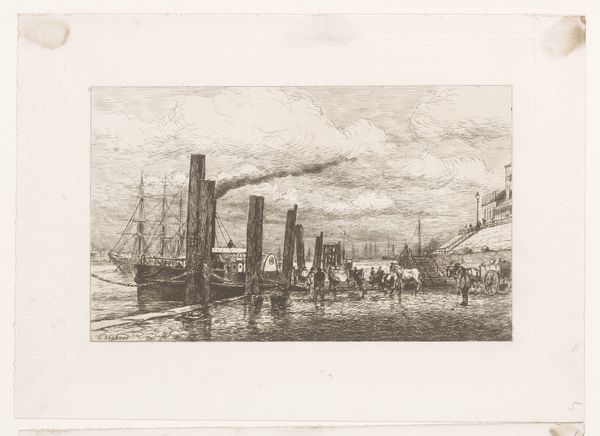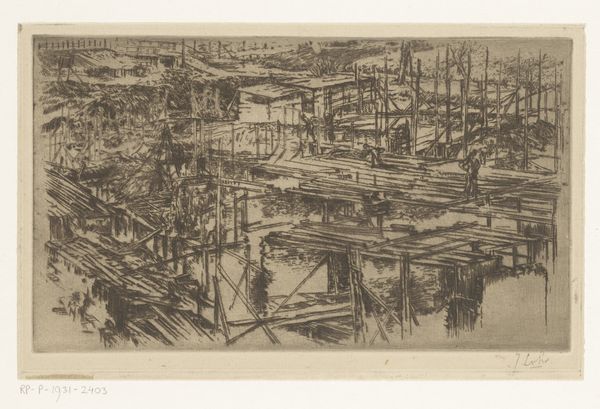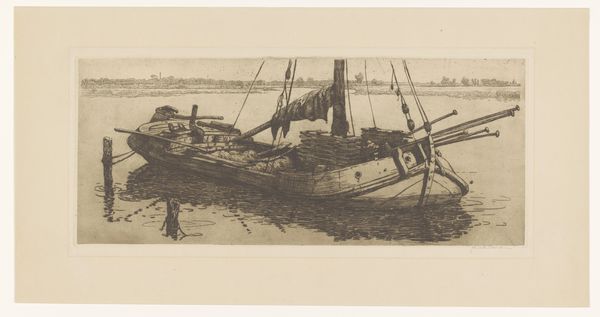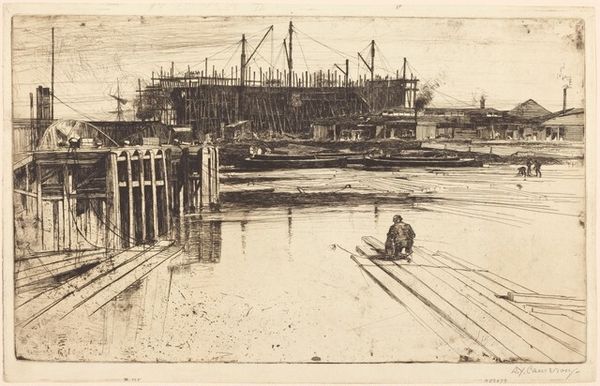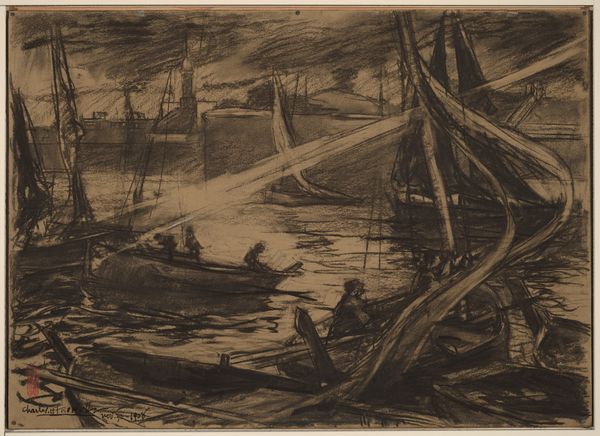
Dimensions: 115 × 249 mm (image); 118 × 250 mm (sheet)
Copyright: Public Domain
Curator: Here we have Donald Shaw MacLaughlan’s "L'Estacade," created in 1899. It’s an etching printed on paper, showcasing the artist’s command of the printmaking medium. Editor: My first thought is how raw the scene feels, almost unfinished. The sharp lines of the estacade contrast dramatically with the blurry sky, evoking an intense atmospheric mood that feels quite industrial and maybe even a little desolate. Curator: Absolutely. The industrial context is key here. Consider how the late 19th century was a period of immense social change fueled by industrialization, class division, and a growing understanding of global economies. McLaughlan was certainly impacted by those circumstances, often making use of themes showing harbor docks. This work reflects the transformations occurring in urban waterfronts, places where different social classes and global commodities came into close contact. Editor: That really changes how I see the piece. The estacade ceases to just be a piece of infrastructure; it’s a symbolic intersection where economic forces and human lives meet. Do you see that lone figure working down by the boats? There is certainly an idea that there are some more disadvantaged players. Curator: Yes, and the figure adds an important layer of social commentary, hinting at labor relations and the role of the individual within this large, evolving urban structure. Note how the bridge-like estacade obscures a distant, ghostly boat in the background; it creates layers both literally and figuratively. Editor: Thinking about how this print might relate to modern socio-economic disparities makes its composition so vital. I am now reflecting on a quote by Walter Benjamin from "The Work of Art in the Age of Mechanical Reproduction," regarding the potential for art to become politicized as social circumstances change over time. He would have been interested in this! Curator: Absolutely. These types of visual dynamics in art can make powerful commentary. When contextualized through these lenses, the piece goes beyond its surface to address broader human experiences relevant to current global issues of labor, poverty, and environmental degradation in waterfront environments around the globe. Editor: Thank you for drawing my attention to this, the piece's historical relevance gives it real urgency, and now it certainly leaves a profound impact. Curator: A painting gains further life when approached with a wide open socio-political point of view; It invites us all into ongoing conversations on art.
Comments
No comments
Be the first to comment and join the conversation on the ultimate creative platform.
